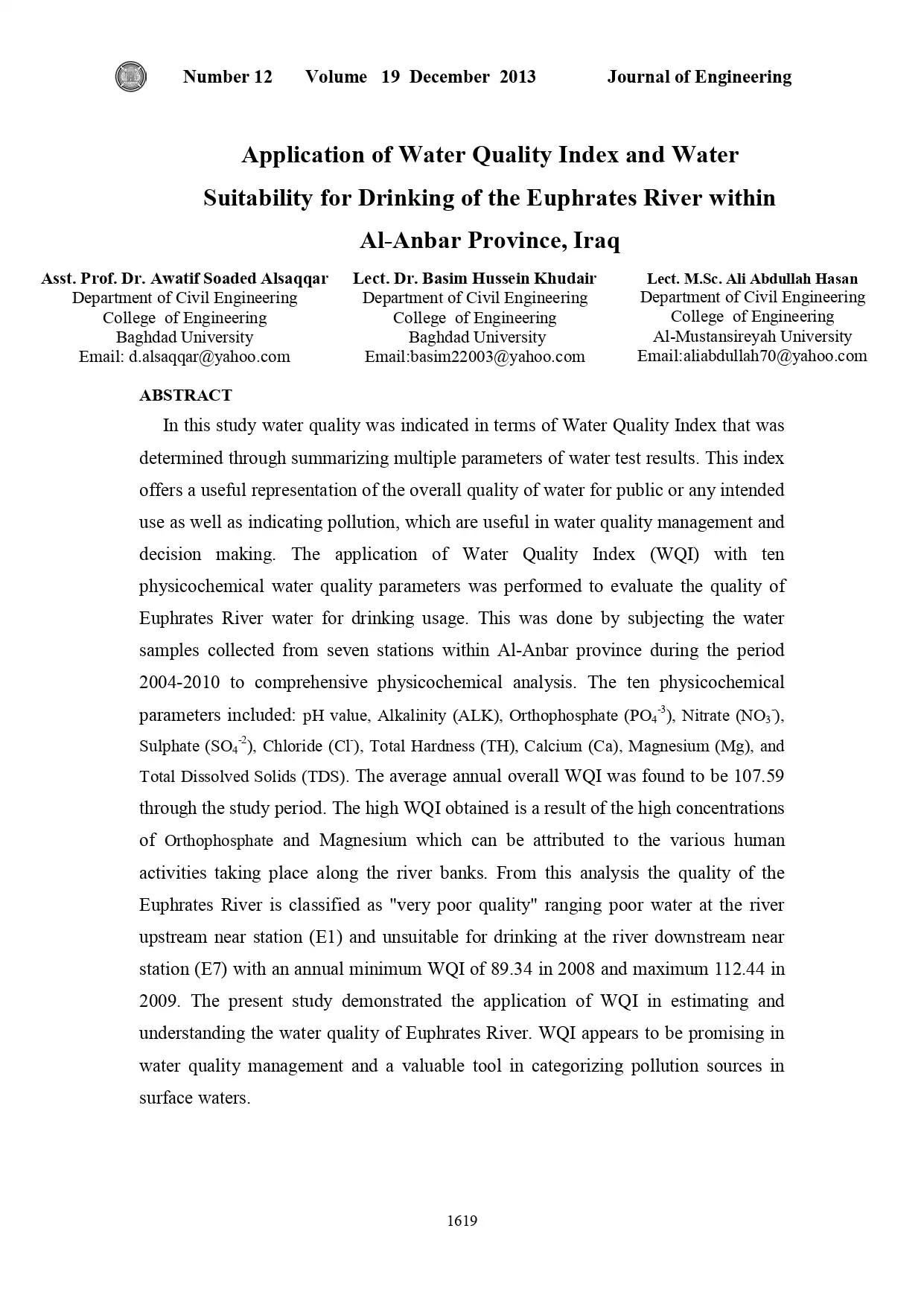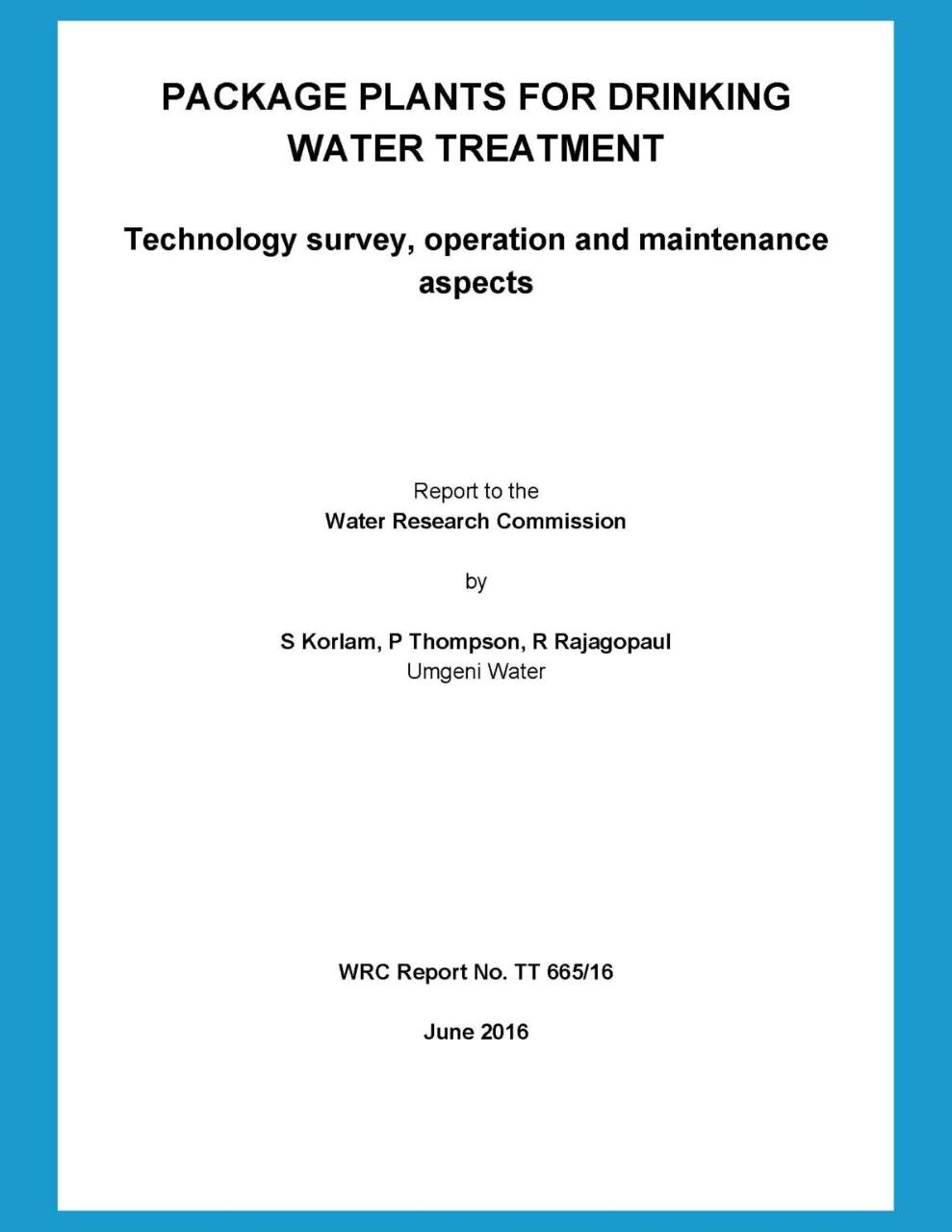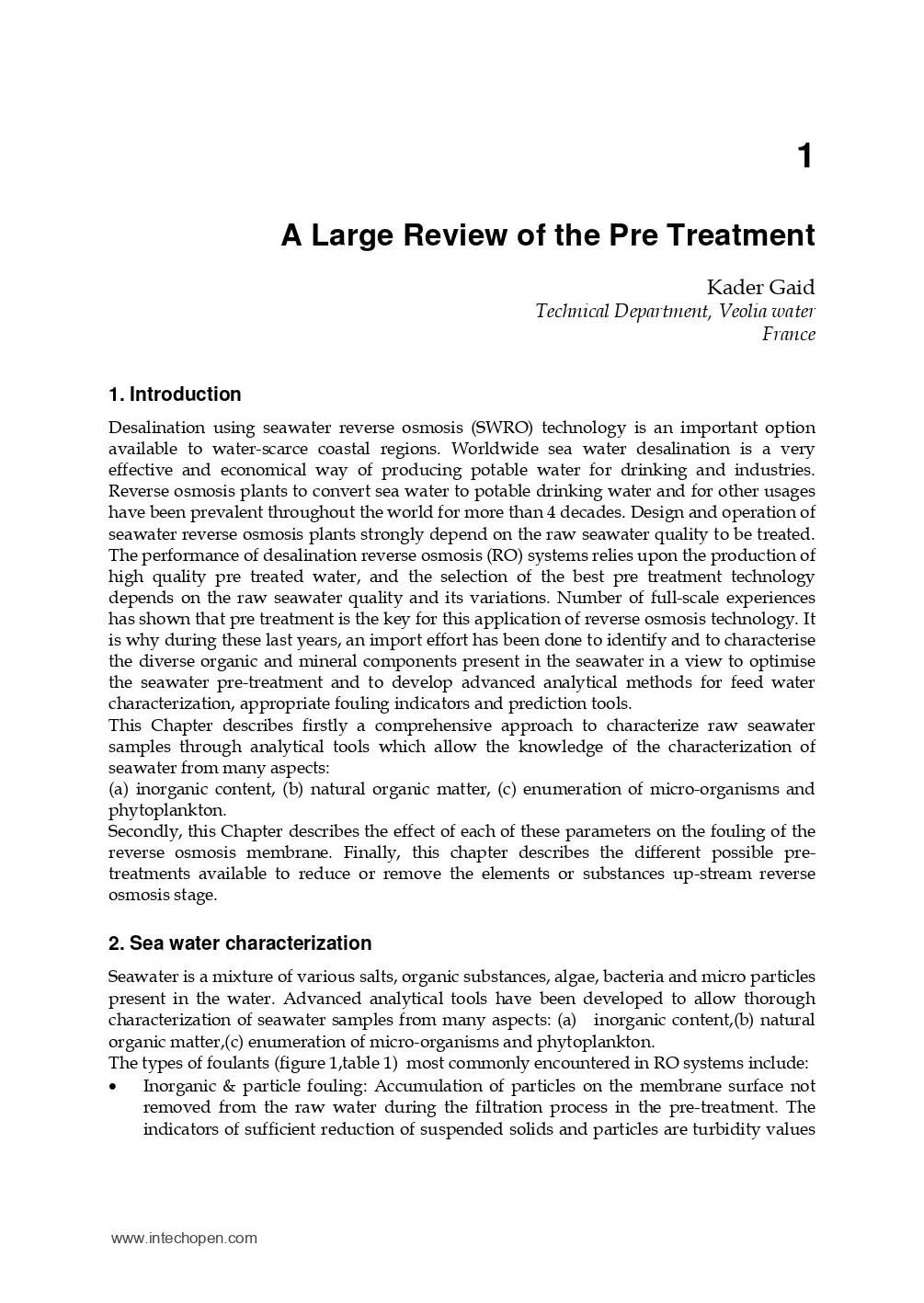Principles and Approaches for Drinking Water Treatment Plant Performance Assessment and Optimization
Principles and Approaches for Drinking Water Treatment Plant Performance Assessment and Optimization
Source: http://www.wrc.org.za/
The benefits of process optimization are well recognized in the cost-effective operation of a water treatment plant and deferment of capital cost. Several methodologies have been developed internationally to guide the assessment process. In South Africa, for compliance with the Blue Drop criteria, water services institutions are required to compile a plant-specific process audit on an annual basis which also informs the risk management plan. The objective of the process audit is to ensure that the current treatment plant remains adequate to sustain compliance of the final product with regulatory requirements. The process audit is considered a subset of the optimisation assessment as optimization and cost savings are not specifically addressed, with the exception of water losses and energy efficiency.
Only logged in customers who have purchased this product may leave a review.
Related products
Application of Water Quality Index and Water Suitability for Drinking of the Euphrates River within Al-Anbar Province, Iraq
Application of Water Quality Index and Water Suitability for Drinking of the Euphrates River within Al-Anbar Province, Iraq
Adsorbent Material Used In Water Treatment-A Review
Adsorbent Material Used In Water Treatment-A Review
Package Plants For Drinking Water Treatment
Package Plants For Drinking Water Treatment
Arsenic Removal From Drinking Water By Advanced Filtration Processes
Arsenic Removal From Drinking Water By Advanced Filtration Processes
Module 11: Administration of Water Treatment Plants
Module 11: Administration of Water Treatment Plants
Inorganic Contaminant Removal
- Inorganic contaminant treatment selection considerations
- Advanced inorganic contaminant removal chemistry terminology
- Advanced inorganic contaminant removal chemistry explanations
- Conventional filtration and how it relates to inorganic removal
- Detailed information on treatments for iron and manganese removal
- Detailed information on treatments for hardness removal
- Detailed information on inorganic contaminant monitoring protocols
- Detailed tables on the following topics:
- Sources of 26 inorganic contaminants
- Common secondary standards with effects, inorganic contributors and indications
- Various treatment technology options to consider for 24 inorganic contaminants
- Potential forms of iron and manganese
- Iron and manganese sampling procedures
- Iron and manganese oxidant selection criteria
- Iron and manganese theoretical (initial) dosing criteria
- Potential treatments for less common inorganics
- Potential treatments for miscellaneous trace metals
Inorganic Contaminant Removal
- Inorganic contaminant treatment selection considerations
- Advanced inorganic contaminant removal chemistry terminology
- Advanced inorganic contaminant removal chemistry explanations
- Conventional filtration and how it relates to inorganic removal
- Detailed information on treatments for iron and manganese removal
- Detailed information on treatments for hardness removal
- Detailed information on inorganic contaminant monitoring protocols
- Detailed tables on the following topics:
- Sources of 26 inorganic contaminants
- Common secondary standards with effects, inorganic contributors and indications
- Various treatment technology options to consider for 24 inorganic contaminants
- Potential forms of iron and manganese
- Iron and manganese sampling procedures
- Iron and manganese oxidant selection criteria
- Iron and manganese theoretical (initial) dosing criteria
- Potential treatments for less common inorganics
- Potential treatments for miscellaneous trace metals














Reviews
There are no reviews yet.